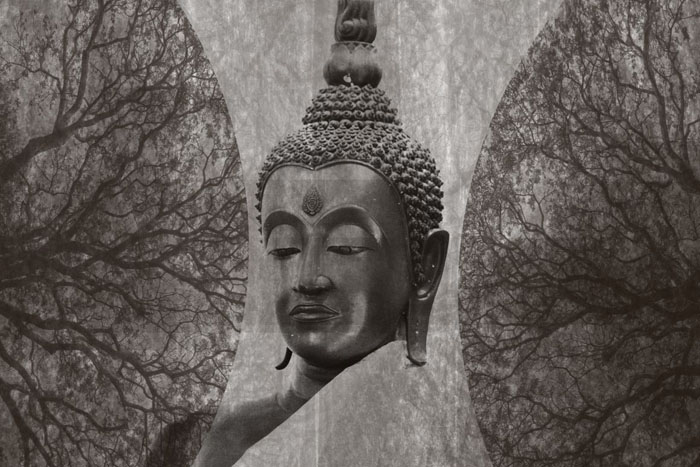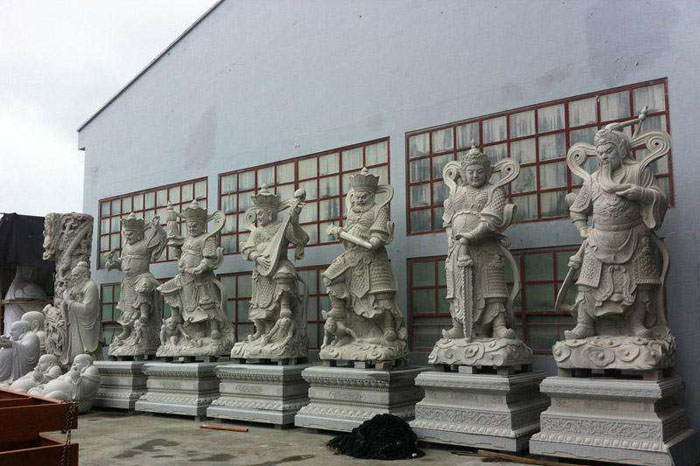Nowadays, stone sculptures are becoming more and more popular. Large stone sculptures, large Buddha statues, large sculptures, etc. will appear in various large squares. And these stone sculptures are very huge, generally more than 7 meters in height can be called large stone sculptures. Among the carving techniques, Buddha statues are the most complicated. Today, we will learn about the carving process of Buddha statues with Xiaobian Jiahao.

The first step: When carving a Buddha statue, the carving technician must first form a three-dimensional Buddha statue in his mind. For example: the body shape, movement, demeanor, head, neck, chest, body, limbs, handprints, crown straps, clothing, clothing patterns, accessories, etc. of a stone Buddha statue. However, from the whole to the part, each part must have a clear thinking structure, and use this conception to guide the entire stone carving process. The conception of carving Buddha statues is generally completed by the sculptor himself, or based on the draft or model provided by the client, and then the sculptor completes the carving.
The second step is to confirm the size of the Buddha statue after the stone sculpture design is finalized. Generally, large-scale stone Buddha statues are made by splitting, so the parts of the Buddha statue must be allocated, and then the stone materials should be selected according to the basic proportion of the Buddha statue. For example, stand seven and sit in five sets and three halves, three courts with five eyes, one hand covering half of the face, two shoulder widths, two legs, one half of the upper arm, one half of the forearm, and the front and back are separated according to the pros and cons of each side of the stone.
In the third step, after the stones are distributed, the stones are broken into blocks of about 3 cm left in the wasteland, and then the bottom surface of the Buddha statue is flattened, and the center line, the dynamic line of the head, and the side line are placed. Use a curved ruler along the side line. Cross the bottom plane of the Buddha image, draw out the four sides, and then press the bottom line of the base to measure the height of the base with a ruler to punch out the base, turn over so that the front of the Buddha image faces upward.
The fourth step, on the front of the Buddha statue, use bricks or brushes to outline the basic positions of the Buddha statue’s head, neck, chest, limbs, and undulating clothing patterns, and use drills to shape them to make the basic outlines of each part appear. , After hitting the front, hitting the side, hitting the back, this process is called Dahuang.
The fifth step is to start from the front of the Buddha statue, and further outline the various parts of the Buddha statue and the structural relationship between each other. The mutual structure and the ins and outs of each part are carved clearly. According to this method, the side and back are done again. The shortage at this time is less than 1 cm.
The above five-step process is called settling.

The sixth step is to use a flat-tipped fine drill and a grasping knife and a knife to start looking for thinness, such as silk hair, open face, penetration, carving accessories, carving patterns, carving bases, etc. Do not use too much force during penetration. The dregs produce living slag, and the slag can not be killed. Dig out the opening layer by layer, bit by bit. When looking for details, the entire Buddha image should be carefully cleaned up several times to remove all the extra parts that affect the artistic modeling. This step is called ballasting.
The seventh step is to start polishing. Earlier polishing blocks are made of sandstone. There are coarse sandstone and fine sandstone. First, use coarse sandstone to grind several times, and then use fine sandstone to grind several times and polish. Then, first rub the yellow wax on the raw white cloth, and then use the raw white cloth to wax and polish the head, face, arms, shoulders, and insteps of the Buddha statue. No other parts are waxed. This is a contrast polishing technique that looks more polished. Light.
Complete the above seven steps, and finally, a lifelike stone Buddha statue appeared before our eyes.